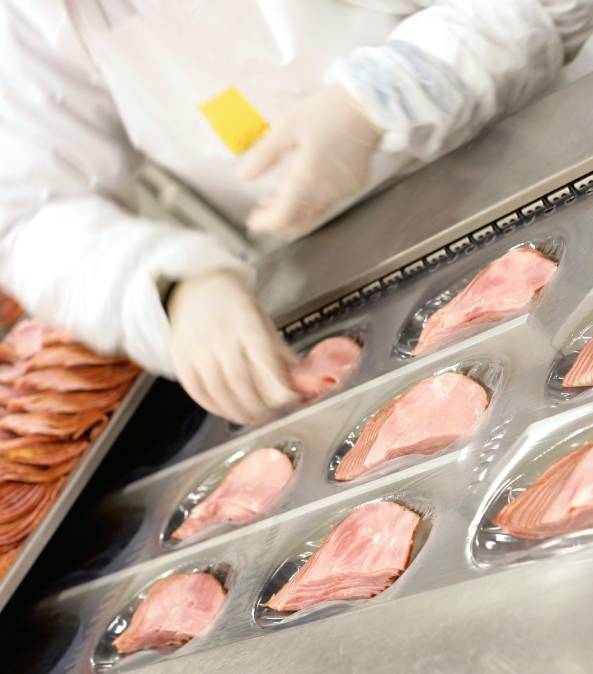China's Food Law & Regulations E-book
US$
Language: English
Format: A4 | 53 pages
Publisher: SGS China Agriculture and Food Department
Highlights:
- Overview of China’s Food Safety Law & Regulations System
- Imported Food Evaluation, Examination & Approval System
- Registration & Filing System For Importers & Exporters
- Imported Food Safety Management & Food Labelling
- New National Standard For Infant Products
- Supervision & Management of Imported Food Market
- Frequently Asked Questions About Imported Food in China
China's Food Law & Regulations E-book
Background
Food is what matters to the people and safety is what matters to food. As a basic livelihood issue in China, food safety always plays an important role in public safety. Over the past 42 years of reform and opening up, the legal system of food safety supervision in China has been continuously improved and developed. Among them, the promulgation, implementation and improvement of the Food Safety Law has played an important role in standardizing food production and operating activities, preventing food safety accidents and enhancing the standardization, effectiveness and scientificity of food safety supervision.
As an extraordinary year, the year 2021 brought unprecedented challenges for domestic and foreign trading companies. Faced with the severe impact and challenges of COVID-19, China has taken a series of strategic measures to protect the national economy and stabilize the international market, proposed a major strategic initiative to accelerate the establishment of a new development pattern of “dual circulation” in which domestic economic cycle plays a leading role while international economic cycle remains its extension and supplement, and effectively maintained the stability of the regional industrial chain and the development of bilateral trade. According to Customs Statistics, China’s foreign trade in goods in the first three quarters totalled 28.33 trillion yuan, up 22.7 percent year-on-year including imports of 12.78 trillion yuan, an increase of 22.6%.
On April 12 2021, the Provisions of the People’s Republic of China on the Administration of Registration of Overseas Imported Food Production Enterprises (Order No. 248 of the General Administration of Customs of the People’s Republic of China), and the Measures of the People’s Republic of China for the Administration of Safety of Imported and Exported Food (Order No. 249 of the General Administration of Customs of the People’s Republic of China) as successively promulgated by the General Administration of Customs have turned over a new leaf in regards to safety of the imported and exported food, representing that China has begun its march towards and achieved new progress in construction of the “14th Five-Year Plan”, deepening reforms, and the goal of modernizing ports.
In order to help the development of the food industry, improve the safety level of imported food, help domestic and foreign enterprises to better understand China’s imported food market under the new pattern of dual circulation, and enable more quality products from overseas enterprises to be exported to China smoothly to meet the needs of the Chinese market, we released this e-book released in 2020, which has exerted certain influence on the imported food industry and received highly favourable reviews and great attention. At the same time, more than 40% of professional readers hoped that this e-book would be continuously brought to life so as to better adapt to the ever-changing access requirements for trade in the imported food. In view of the complicated and volatile international situation and the new pattern, the publication and revision of new laws, regulations and policies will also have a huge impact on import trading companies. Therefore, there is a long way to go in continuous updates and improvement of the e-book.
On the basis of the previous version, this new edition will retain the original features as much as possible, with emphasis on changes in new regulations and policies, and introduce professional and in-depth interpretations, in order to offer insights for overseas suppliers, domestic importers, trade organizations and institutions, and all those who are interested in understanding the legal supervision system of the imported food in China.
Table of Content
- Overview of The Development of China’s Food Safety and Law Regulations System
- China’s Current Food Safety Laws And Regulations And Regulatory System
2.1 China’s Current Food Safety Legal System
2.2 China’s Current Food Safety Regulatory System
2.3 China’s Current Food Safety Standard System - China’s Laws And Regulations And Regulatory System On Imported Food
3.1 Evaluation And Examination System Of Entry Of Food From Overseas Exporting Countries
3.2 Examination And Approval System For Quarantine Of Imported Animal And Plant-derived Food
3.3 Registration And Filing System For Importers And Exporters
3.4 Imported Food Safety Management
3.5 Aquatic Products Access (Case)
3.6 New National Standards For Infant Formula
3.7 Imported Health Food
3.8 Supervision And Management Of Imported Food Market - Questions About The Safety Of Imported Food In China
4.1 What Is The Difference Between China’s General Food Standards And Product Standards?
4.2 How To Determine The Classification Of Food?
4.3 What Shall Be Done If Corresponding Food Standards For Imported Food Cannot Be Found?
4.4 What Materials Shall Be Prepared For Application For Inspection Of Imported Food?
4.5 What Shall Be Noted In The Use Of Compound Food Additives?
4.6 What Are New Food Raw Materials?
4.7 If There Are Hazardous Substances Without Limits In The Standard, Is It Impossible To Detect Them?46
4.8 What Principles Should Be Followed In The Use Of Veterinary Drugs?
4.9 Is The Label “Not Contained” Or “Not Added” Suspected Of Misleading Consumers?
4.10 Under What Circumstances Can Labels Of Prepackaged Food Be Exempted?
4.11 What Measures Will China Take In The Event Of An Imported Food Safety Incident?
4.12 When Food Packaging Should Be Affixed With Chinese Labels Of Imported Foods?
4.13 As Referred To In New Provisions (Order No. 248 Of The General Administration Of Customs Of The People’s Republic Of China): The Inner And Outer Packaging Of Foods Should Be Marked With The Registration Number In China Or Such Registration Number As Approved By The Competent Authority Of The Country (Region) Where They Are Located. What Do The Inner And Outer Packaging Mean?
4.14 When Will The Customs Regulations Promulgated On April 12, Which Will Become Effective On January 1, 2022, Require Overseas Manufacturers To Complete Registration? - References
Order flow
1. Check Out
Confirm selections and fill in contact info
2. Arrange Payment
Pay by credit card or bank transfer offline
3. Confirmation
Email confirmation with details & link
4. Read E-Book
Click the link to read the e-book
Payment
| Online Payment |
|
| Offline Payment |
|
Submit Enquiry
"*" indicates required fields

